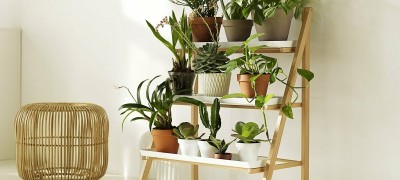How to fix the shelves in the closet
What is not necessary to do when something needs to be done "around the house"! Usually, hands reach the cabinets only when it is necessary to fix the door or fix the shelf.
The latter usually break under the weight of what "may be needed" and "it can still be carried." Since the fasteners for the shelves in the cabinet were not originally designed for such a mode of operation, everything has to be redone from time to time. Fortunately, there are plenty of options.
Types of fasteners for different shelves
There are three main types of shelves used in modern furniture:
- Wooden. The material is chipboard or MDF. The most common type.
- Glass. They are made of tempered glass by a special thermochemical treatment. As a result, additional strength is provided, which allows them to be used in furniture production.
- Mesh or wire. They are in the form of a wire frame in the form of boxes or baskets.

There are additional modifications of shelves, such as folding, pull-out or height-adjustable. However, for their installation, no specially designed type of fittings is used (with the exception of retractable).

Holder for glass shelf in cabinet
There are two most common types of glass shelf supports.
Classic, basic
In general, they represent the pin design and are structurally divided into two parts: secret and support. The first part is usually wall-mounted. Support - designed directly to hold the plane of the shelf. It is made in the form of a platform: simple, coated, with a plastic gasket or an installed suction cup. Allows you to remove the shelves without using a tool.
"Pelican": plug-in, with a lock
This type of fastening can have a different design, but in principle it also consists of two parts: a secret and a receiving one. The secret part allows you to install the fasteners on the cabinet wall, and the receiving part contains a groove where the glass is inserted and secured with a latch. Installation requires a screwdriver or special wrench.
Fastening mesh shelves
These shelves are often used in kitchen cabinets or wardrobes. If in the kitchen they are used, as a rule, for storing (drying) dishes, then fastening the shelves in the built-in wardrobe of the compartment may require special reinforcement (in addition to the standard one or the one supplied in the kit), since in this case mesh shelves are most often used for storage shoes.
This imposes its own requirements due to the high load and the increased size. In general, the mount is a stop with a pinned part for mounting and a groove for placing the frame wire.
Installation of shelves in the closet: types of fasteners
Furniture fittings differ both in purpose and in the nature of the connection provided.
By appointment, fasteners are:
- Wireframe.
- Mounting.
- Power.
By the nature of the connection:
- Collapsible.
- Non-collapsible.
Usually, fasteners involve the use of tools such as a drill, forstner cutters, countersinks, screwdrivers, hex keys, chisels, wood glue. In addition, some types of fasteners require the use of a very specific tool, which imposes restrictions on the possibility of their use (Lamello Invis tie).
Before choosing the type of fasteners, you should carefully consider the nature of the use of the cabinet, so that later you can ensure trouble-free maintenance of individual elements or complete disassembly.
Euro screws (Euro screws, confirmations)
They are used for joining wooden furniture elements (chipboard, MDF). Such fasteners for a shelf in a cabinet puts forward a requirement for a wall thickness of at least 16mm. Confirmates are made in a certain range of lengths, from 20 to 70mm.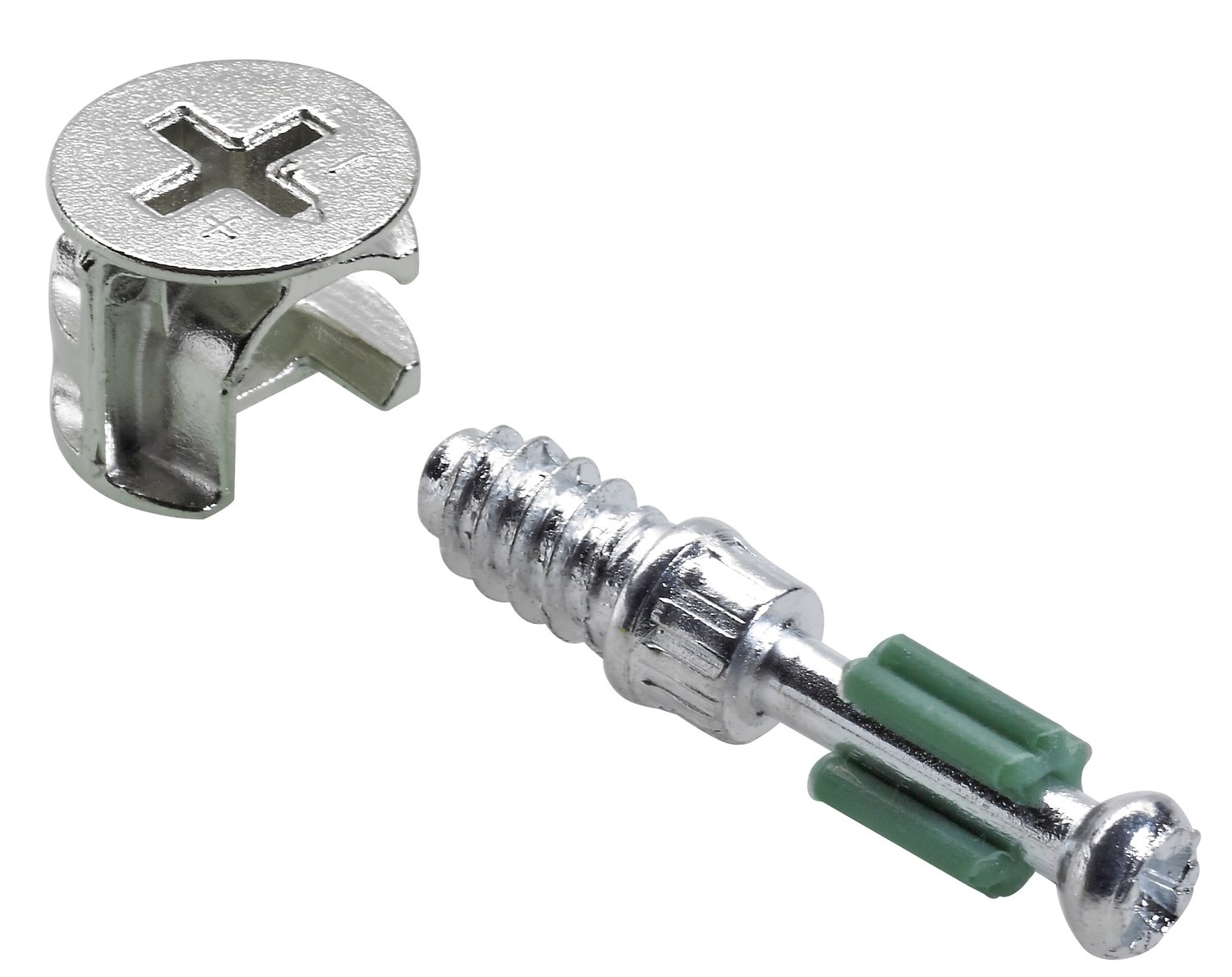
Preparing the bore requires special drills with a countersink at the base and special wrenches to lock in place. They differ in relative ease of assembly, however, they may not be suitable for all types of furniture, since the screw head remains open. In addition, Euroscrews do not allow organizing the longitudinal arrangement of shelves at the same height in the presence of vertical bridges.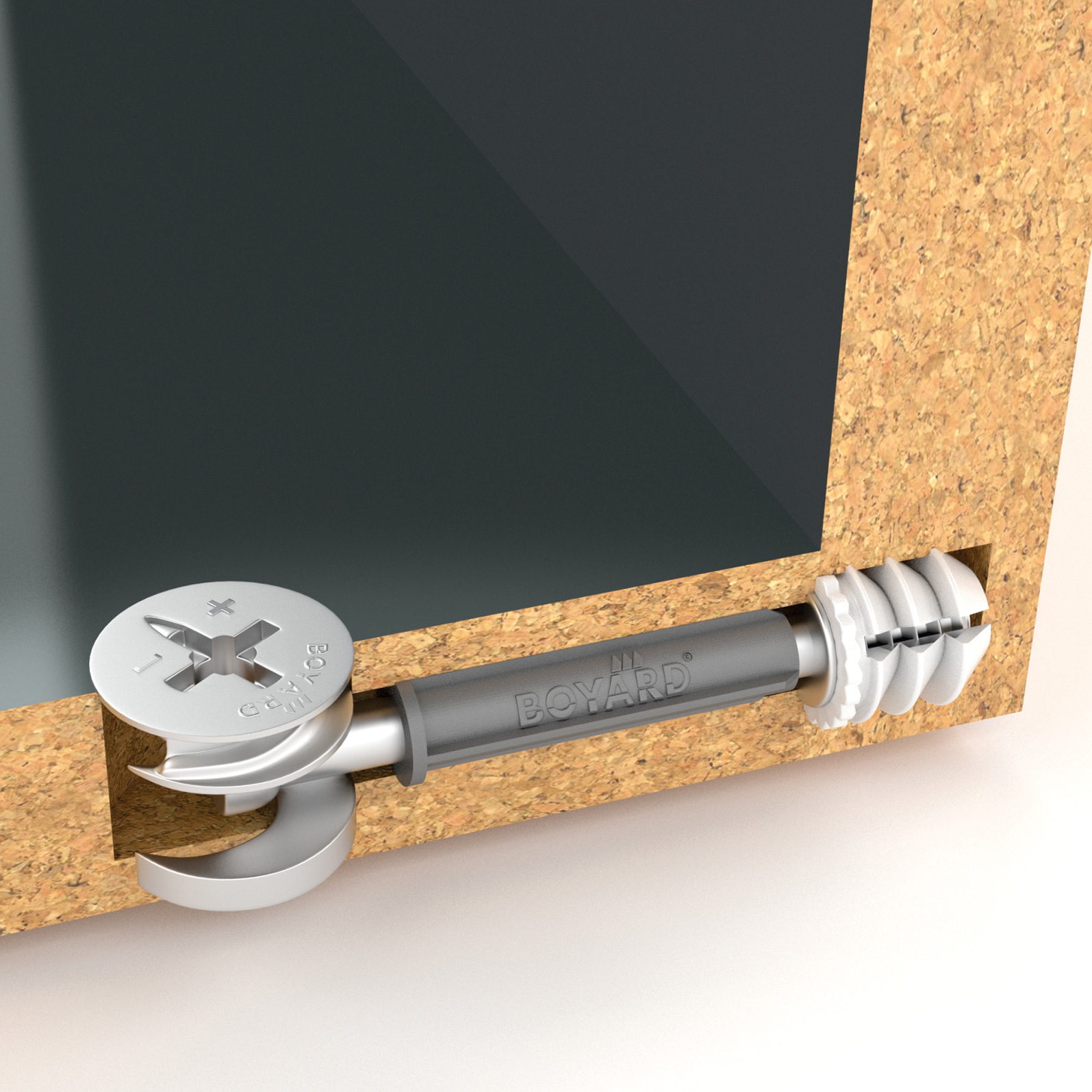
Mounts for shelves in the closet: ratex (minifix)
This hardware belongs to the so-called eccentrics, which indirectly indicates their principle of operation. This type of fastener provides good strength of the joints, but is difficult to prepare, as it requires high precision in hole drilling. Structurally, it consists of a bushing for a pin (footer), in fact, a pin and a tightening bushing.
The footer is installed in the wall of the cabinet, in a previously prepared place. A pin is screwed into it. For the shrink sleeve, a cutter selects a piece of wood so that it fits flush in the shelf. Perpendicular to it, from the end, a hole is drilled for a pin. After the connection is assembled, the bushing pulls up the pin and clamps it, thanks to the groove in the sidewall (hence the eccentric).
Such a connection has two significant drawbacks: it cannot be used in a finished frame, and when marking it, it should be borne in mind that, when fixing, the shelf can be displaced in the plane.
Conical coupler
In this case, installing shelves in a cabinet is similar to installing using a minifix. Moreover, their schematic diagram is also quite close: both there and there are a footer, a tightening sleeve and a pin. The only difference is in the method of retention.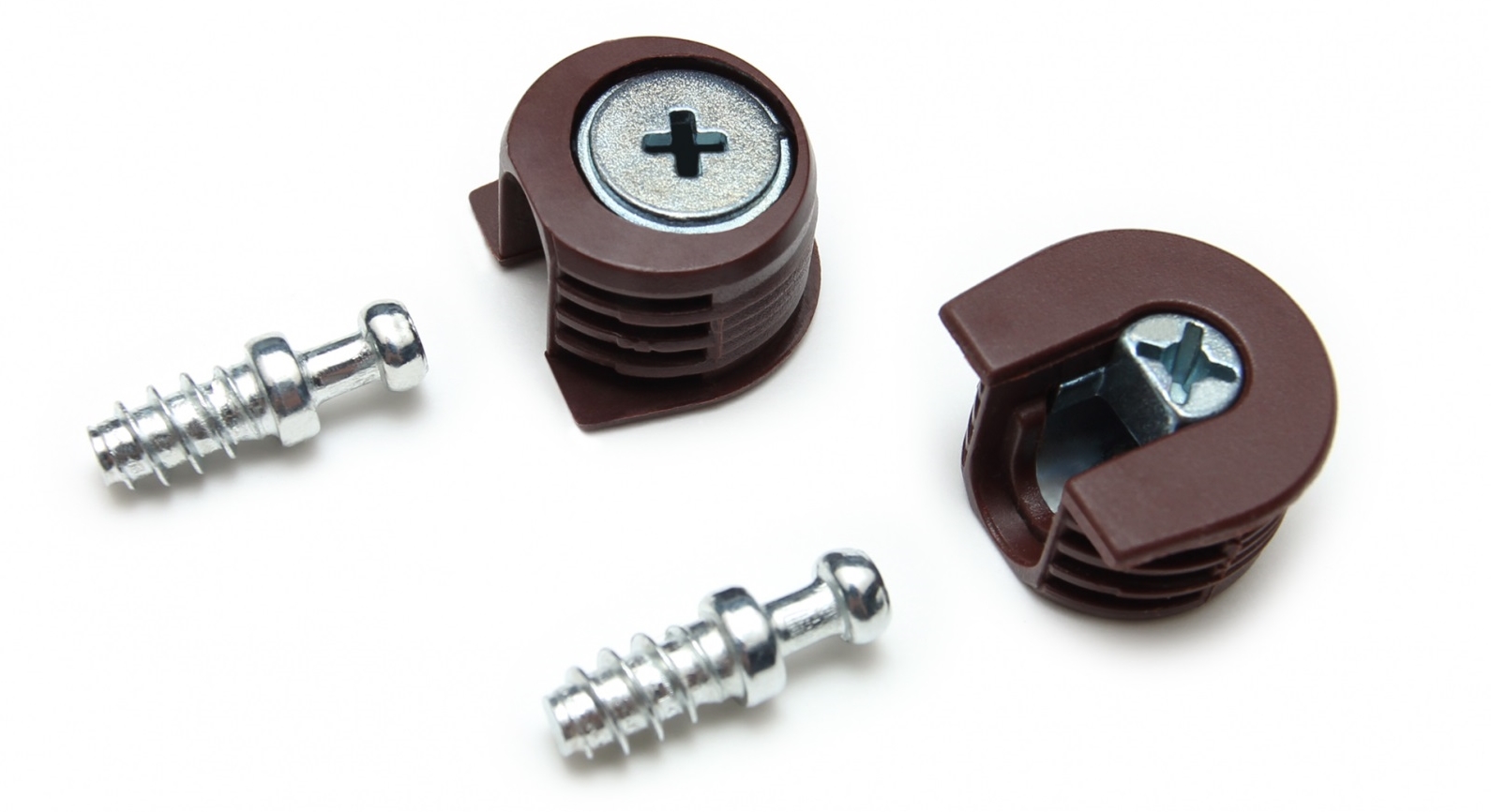
If the raster provides this with the help of a groove in the bushing body, then here the fixation is carried out with a special conical screw, which, screwing into the bushing cavity, engages the corresponding hole at the end of the pin and tightens it, thereby creating the necessary tension.
Screw tie
Typically, this fastener is used to lengthen (splice) shelves, in particular in the presence of vertical walls. This solution provides both a rather convenient installation method and high reliability.It can be considered as additional reinforcement for the frame.
The schematic diagram of such a solution is extremely simple: a part of the wood is selected from the edge of the shelf with a cutter, forming a depression. A similar one is being formed in the other shelf. A hole is drilled in the wall large enough to allow the threaded lug pin or screw to pass. Special shaped staples with a hole in the side are inserted into the recesses. The pin is threaded through the staples, and then tightened with nuts on both sides.
Mounts for shelves in the closet: rafix
Another representative of the type of eccentrics, only unlike the minifix, does not require drilling the end channel. The schematic diagram is approximately the same, only the pin is held in place with a special screw.
The selection for the sleeve is made at the edge of the shelf, so that after processing with a milling cutter at the end there is an opening sufficient for the passage of the pin, which is installed on the cabinet wall. After that, the shelf with inserted bushings is put on the pins. Fixation takes place by tightening the bolts. The disadvantages of rafix include the inconvenience of installation, especially with a low height of the shelves.
Shelf support
The simplest, moreover, no less effective option for attaching shelves. Structurally, it differs in mortise and hinged. Mortise assumes a pin part, with which it is installed inside the wall. Hinged - fastened with screws or glue.
With this method, the shelf is freely located on the stops (under its own weight), which, if necessary, makes it easy to dismantle. Structurally, a typical holder for a shelf in a cabinet can be equipped with a platform supplemented with spacers or a special protrusion to prevent the shelf from moving towards the door.
Dowel
The same pin, only made of wood, is the oldest way of connecting pieces of furniture to each other. Structurally, it is a small chopik (20-30 cm in length) with corrugation along the lateral surface. The connected parts of the frame (or shelves) contain inlet and counter coaxial holes, so that the pin installed in the end of the shelf enters the hole on the wall of the cabinet.
In principle, the installation of dowels is enough. Nevertheless, for the reliability of the connection, as well as to strengthen the frame, the adjacent ends are additionally glued (sometimes the confirmations are screwed in). A clear drawback of this type of mounts is the complexity of dismantling. As a rule, such fasteners for a shelf in a closet
used in non-separable structures.
Corners
Also a simple and at the same time reliable type of fastening accessories. They differ both in design (in details) and in the material of manufacture. Of course, it is best to install metal corners as stronger and more durable. However, they have a significant drawback - appearance.
Since the installation of corners, both to the wall and to the shelf, is carried out using screws, this may not always be acceptable. In such cases, the installation of shelves in the cabinet is carried out using open or closed plastic corners. The closed-type fastener has a special cover that hides the less aesthetic inner part.
However, recently, metal corners have also begun to be supplied with decorative covers.
How to attach removable shelves?
Removable shelves are often installed in an already used cabinet. It can also be an initial decision that pursues its own specific goals.In principle, most of the above types of fasteners are suitable for their installation, but not all. The following are commonly used:
- Shelf supports.
- Corners.
- Screw or tapered ties.
If you have the necessary tools, rafix may be a good solution, but only if the shelf does not need to be removed every other day.
Cabinet shelf holder: care and use
As such, there are no special rules relating solely to the care of fasteners. Unless the plastic corners and the tension sleeves are kept clean. The operating mode is more important here. For example, a Euro-screw connection does not carry loads well in the perpendicular plane.
Minifixes, tapered ties and especially rafiks have a higher degree of resistance. The weakest point of such fasteners is the cutouts for the pin. Therefore, do not overload the shelves. In addition, it is advisable not to allow excess humidity in the room, since this does not in the best way affect the mechanical properties of wood.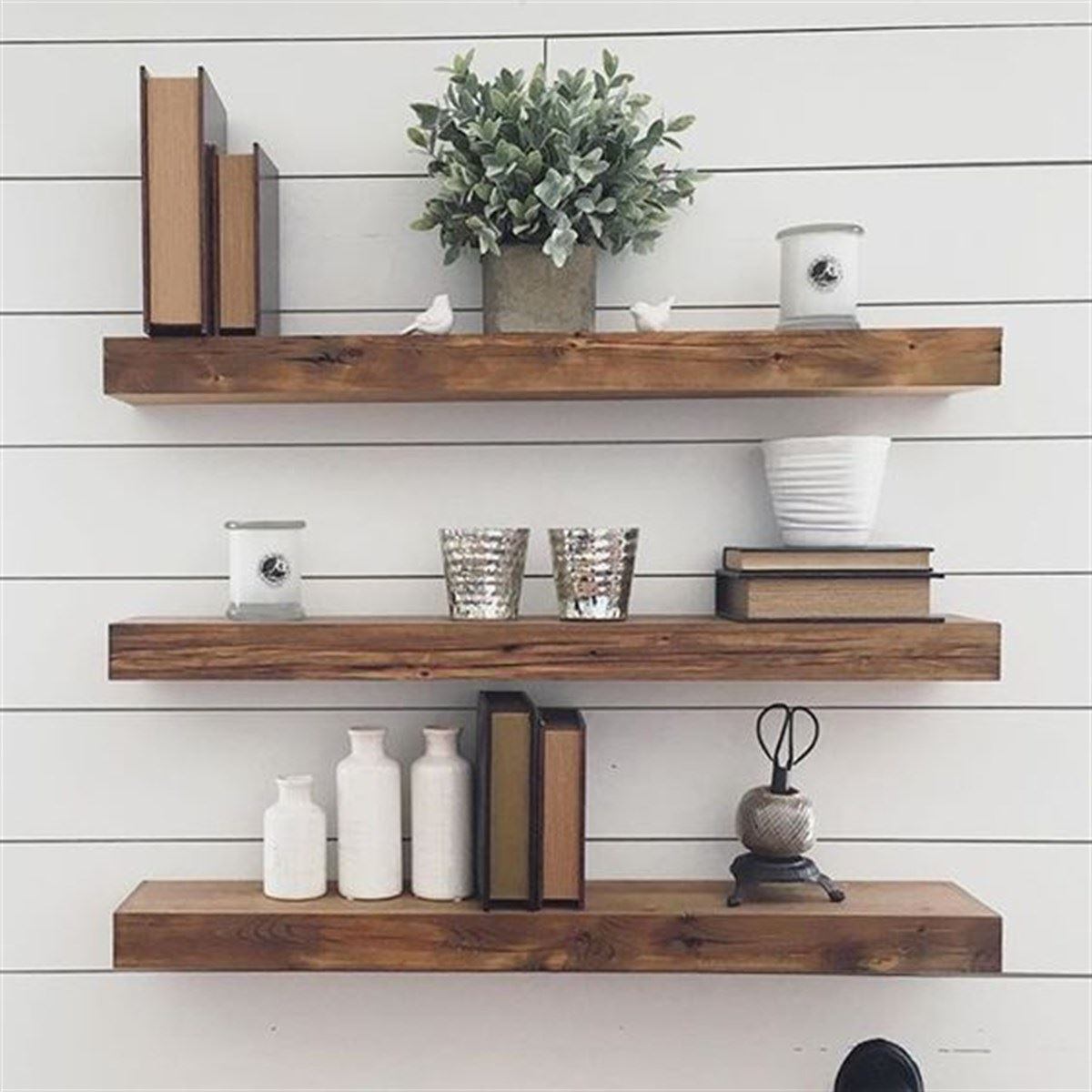
Based on the large selection of available fasteners and auxiliary fittings, solving problems with installing a new shelf or fixing a broken one should not be too difficult. Moreover, using the original fittings for the shelves in the closet, you can try to optimize the internal space so that everything that may be needed can definitely fit there.
Video: how to hang shelves on hidden fixtures?

